Michelle Valberg, photographer-philanthropist-visionary
“What a gift to be able to talk to and photograph all these incredible people.”
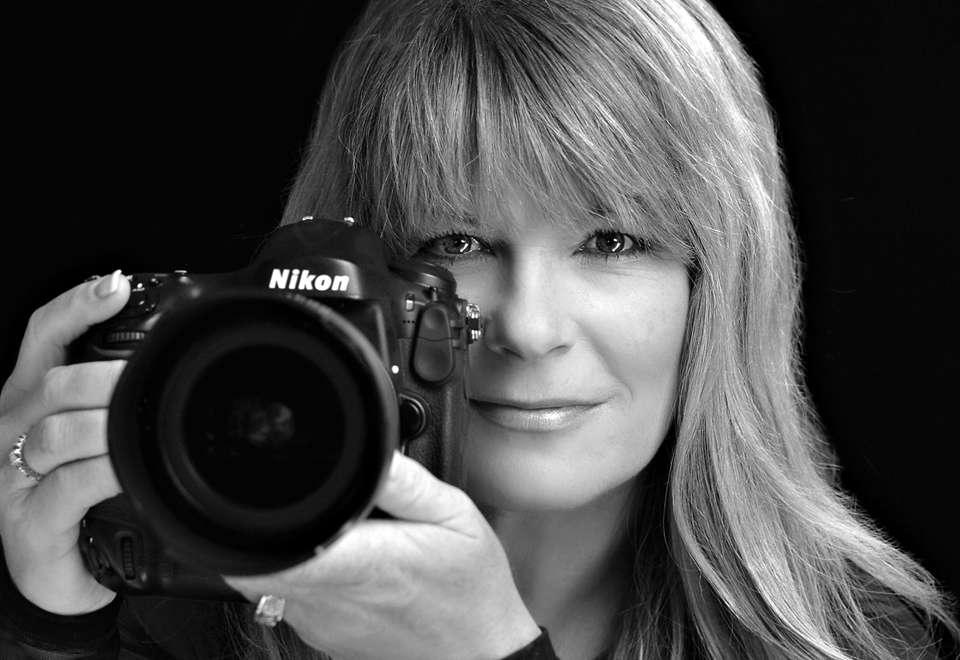
Photo: Valerie Keeler
I discovered Michelle Valberg a few glances at a time. Growing up in Ottawa, Ontario, I would often walk by her studio, Valberg Imaging, and look in at the prints on her walls, gaze admiringly at the canvases on display in the windows. Her talent was clear and abundant, and it was impossible not to pause and stare at the photographs.
It wasn’t until more recently that I discovered the truth: the stunning photos in Michelle’s studio offered only a snapshot of her talents and accomplishments. (Have a look at her National Geographic profile and you’ll get a good idea of what I’m talking about.)
In addition to her portraiture, which exquisitely captures the souls and stories of each of her subjects, she has taken some of the most beautiful nature and landscape shots our country has ever produced. She also devotes herself to charity work, from the countless hours she gives to the Children’s Hospital of Eastern Ontario (CHEO), The Ottawa Hospital and St. Joe’s Women’s Centre, to Project North, the not-for-profit organization she founded in 2009 to deliver education and sport-based opportunities to youth in Canada’s Arctic.
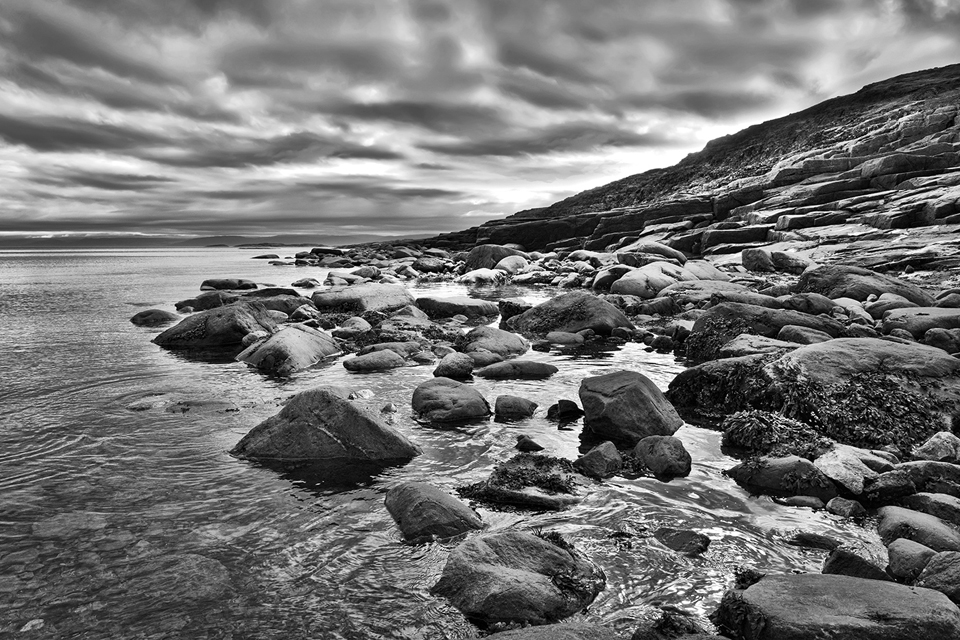
Iqaluit, Nunavut, August 2014, Photo: Michelle Valberg
Take it from Kickass Canadian Shelagh Rogers, who has known Michelle most of her life: “I think Michelle is all about beauty. She seeks it. She works with it. As the old poet says, ‘She walks in beauty.’ She is a lovely person. Her work is all about making a better world. She really sees people. She has an all-seeing eye…well, two. She also personifies giving. In some Indigenous traditions in North America, your wealth is judged by how much you give away. In that respect, Michelle is very wealthy indeed.”
Shelagh met Michelle at the Royal Ottawa Golf Club in the 1980s, back when a teenaged Michelle had yet to snap her first photo, and dreamed of becoming a pro golfer. Michelle played competitively within the city, as well as in “a couple provincial championships,” and had her sights set on landing a golf scholarship to an American college. But one fateful autumn weekend, when Michelle was 18, her father handed her his camera to take on a weekend trip to Lake Placid; when she came home, golf was no longer on her radar as a profession.
“(In Lake Placid), I took a picture, I shot the water through the trees, and I was just completely and utterly hooked,” she says. “I just said, ‘That’s it; I’m going to be a photographer.’”
She “knew nothing about the medium,” so her father encouraged her to take night classes at Algonquin College. Then, after graduating from Woodroffe High School in 1983, she enrolled in the University of Ottawa’s Fine Arts program to study the theory and composition behind photography. After two years, she transferred to Algonquin, where she had “great teachers” who helped her develop her abilities.
“Gunther, one of my teachers, stood in a corner and pointed a finger at me and said, ‘If you don’t do anything with your talent I’m going to come and kick your butt,’” says Michelle.
Gunther need not have worried; not long after graduating from Algonquin’s photography diploma program in 1989, she launched Valberg Imaging, which has gone on to become “Ottawa’s premier photographic art studio and gallery.”
And to think it all came about because of a last-minute camera loan before a trip to the Adirondacks.
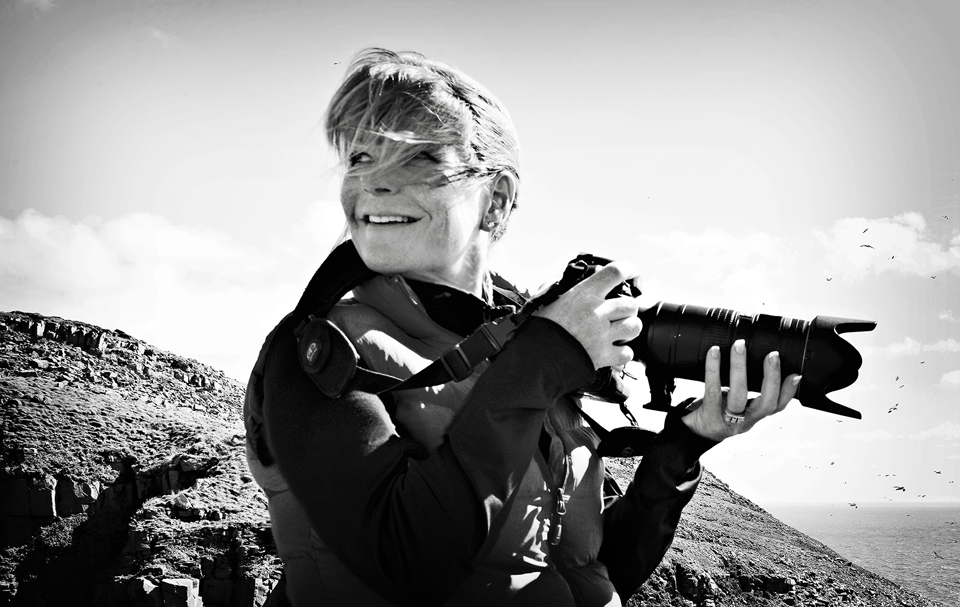
Photo: Michel Guy
Nature, nurture
As Michelle writes on her website, her first love was nature. “I remember vividly the deep desire I had as a teenager when I first started to photograph—I wanted to capture the beauty of every flower, bird and rock I observed.”
She elaborates on that sentiment today:
“I was attracted to photography through nature and through my upbringing. My parents always encouraged (me and my two elder sisters) to be out in nature and appreciate the beauty of the land and wildlife. They were big birders and our trips were about experiencing the outdoors and the land. They never took us to Disney World; that wasn’t what they wanted for us. They wanted us to be active and outside, and that has carried with me throughout my life.
“I try to go out into nature whenever I can. It’s so grounding. You can escape the busy-ness and the craziness of our everyday lives; you just take a walk out into the woods or off the pavement and just open your senses to the sounds of, maybe, the birds or the leaves. You pay much more attention, you use your senses more when you’re in nature.”
Michelle has always had the ability to tune in to her surroundings and their beauty. She just didn’t realize how special that ability was until she enrolled at Algonquin and started applying her skills practically. She entered the program assuming everyone saw the world the way she did, and came out with the realization that her perspective was indeed unique.
“When I’m out taking photos, walking down the street, it’s hilarious to watch people look at me and say, ‘What are you photographing?’ or ‘What are you looking it?’” she says. “I don’t know where it comes from, but maybe if you go back to my parents and my upbringing, it comes from that. My parents always taught us to look past any boundaries that might be in front of you, to never see boundaries. There’s never a problem; there’s only solutions.”
Michelle’s love of people made the progression to portraiture quite natural. She wanted to capture their inner and outer beauty in much the same way that she reflected nature’s beauty throughout her first few years of photography (and every year since, of course).
In the process of photographing people, she discovered something even more powerful than the final portraits she presents to her subjects: the gift of transforming the way they see themselves.
“Most of the time, the first words people say to me before we begin (their portrait session) is, ‘I’m not photogenic’ or ‘I don’t like having my photo taken’ or ‘I’ve never taken a good photo in my life,’” she says. “There are all these intimidation factors when it comes to having your photo taken… For me, it’s about breaking past those barriers and showing people their potential. I find especially when a woman comes in (to my studio), they get their makeup done, and they’re just forced to sit and relax and have the experience be about them—not about kids or family or business or anything else. It’s a wonderful experience for them.
“Ultimately when they look at the camera and see photos of themselves, they say, ‘That’s me?!’ I’ve seen women cry over it because they’ve never felt that way about themselves before or they’ve never looked at themselves that way. We’re creating this image of them that they can be proud of and feel really good about.”
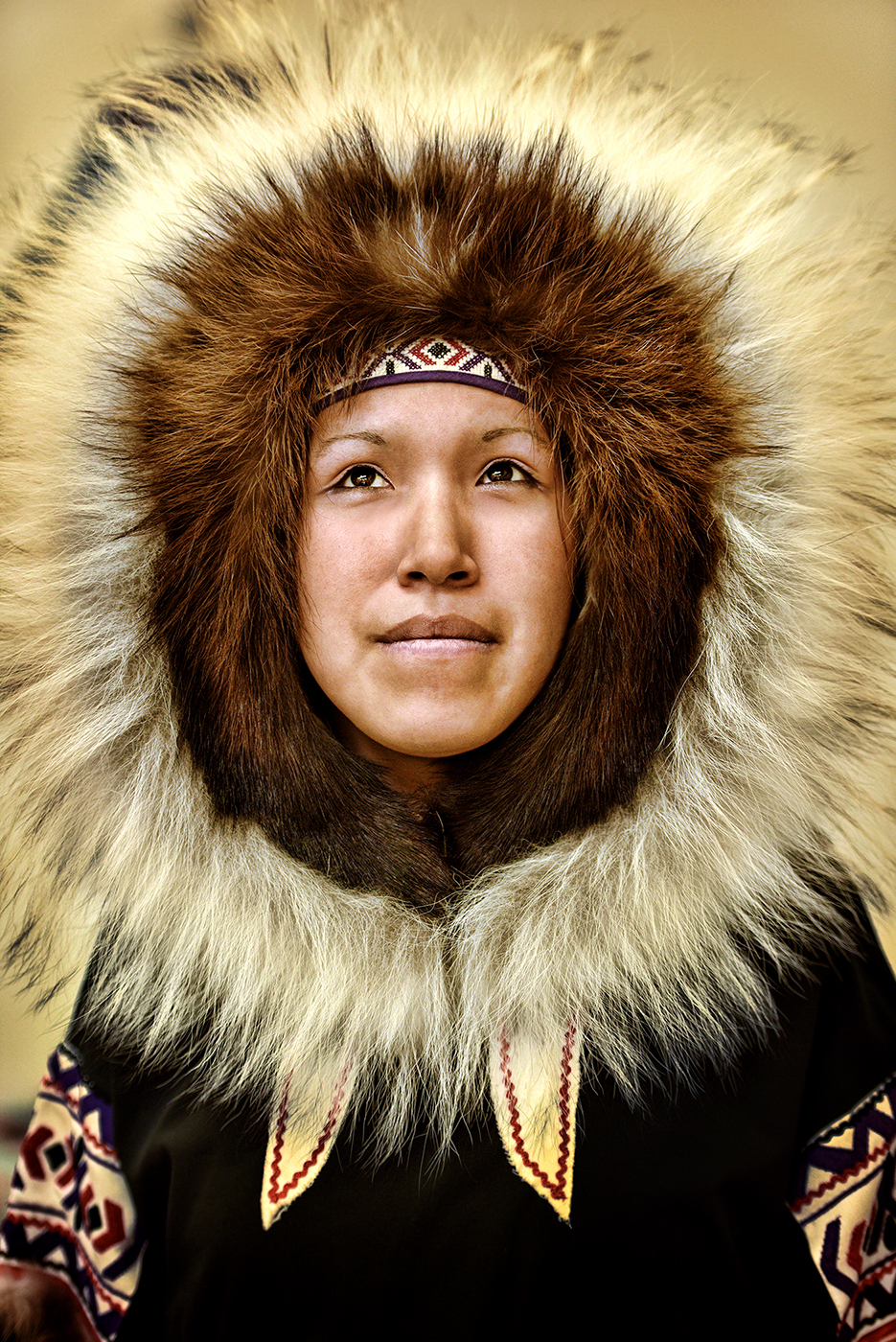
Inuk portrait, Cambridge Bay, Nunavut, September 2014, Photo: Michelle Valberg
Leading woman, leading women
Michelle’s admiration for women comes across loud and clear throughout our interview. So does her determination to overcome any obstacles thrown in their collective path. She talks about the challenges of running a small business, and how they’re infinitely greater for a woman—particularly a newly divorced single woman, as she was earlier in her career. (She’s now happily married to Ottawa firefighter Scott MacLennan, her husband of 14 years and the father of their 10-year-old son, Ben.)
While married to her first husband, she had no trouble securing bank loans for her business. As soon as she started checking off the “single” box on her applications, it became “basically impossible to get any money,” she says. Never mind that she’d been the sole provider in her first marriage. As a self-employed single woman, it was “a constant battle” to get financial backing.
But she persevered, thanks in no small part to the positive thinking her parents instilled in her from childhood (as well as more hands-on help, at times; her late mother, Betty Valberg, had to co-sign on a loan in order for it to go through). “You have to believe and you have to be positive and you have to work hard,” she says. “All those three elements have to kick in, because if you don’t have one of them, you’re going to fail somewhere.”
The near-constant pressure of trying to keep her business afloat often weighed her down. But it was the very nature of her work that enabled her to keep her head above water. “Being creative released me from all of that other stuff,” she says. “It’s what fueled me accepting the fact that I had challenges.”
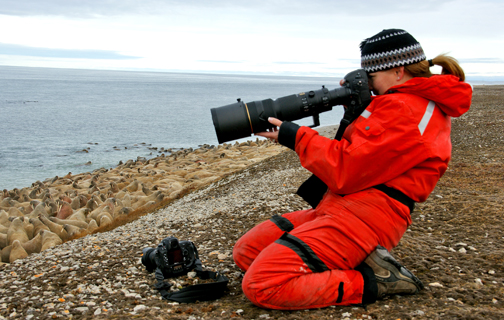
Photographing walruses, Hall Beach, Nunavut, Photo: Patricia MacPhail
A charitable approach
In addition to being positive, Michelle’s parents raised her to give back to her community. She’s been so generous over the years, giving so much of her time and talents without charging, that she had trouble paying the bills earlier in her career.
“I had to learn to find the line between what’s business and when it’s good to be charitable,” she says. “Ultimately I can’t be good to the charities if I’m not good to myself.”
The list of charitable organizations she’s involved with is impressive, including CHEO, St. Joe’s Women’s Centre and the Ottawa Integrative Cancer Centre (OICC). She’s donated her portraiture skills to the annual Ottawa Hospital Gala for nearly two decades. In 2011, she became a founding member of the Royal Ottawa’s Women for Mental Health. She even donated one of her gorgeous canvas prints to my inaugural CARE Canada fundraiser, Kickass Talks for CARE.
Michelle volunteers her leadership skills to a wide range of committees and organizations, including United Way Ottawa, Élisabeth Bruyère Foundation, Ottawa Regional Cancer Foundation, Telus Community Foundation, Algonquin College Foundation, Youth Services Bureau Charitable Foundation and the Royal Canadian Geographical Society.
She has also self-published four charitable books, all of which she financed herself, donating her time to bringing awareness to a variety of important causes. Her first was a coffee table book called Look Beyond… The Faces & Stories of People with HIV/AIDS (1996), which she says she created “to show that AIDS doesn’t discriminate; anyone can catch AIDS and it’s not just a gay disease.” The book features a range of people of all ages, backgrounds and orientations, who contracted HIV. As she puts it, “grandparents and children and families, women and gay men. It was a voice for these people of all generations and genders.”
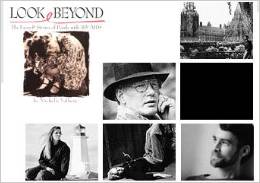
At the Look Beyond launch, Michelle was relieved to have completed the project. It had been a life-altering experience for her, but also an exhausting one; she’d done it all, from photography to writing to design to publishing (having been unable to secure a publisher). So when her dad whispered to her that she should do another book, she says, “I thought he was out of his mind.”
Fortunately, she’d grown up taking her father’s words to heart and she wasn’t about to stop. She released her second coffee table book, Dare to Dream… A Celebration of Canadian Women in 2000.
“What a gift to be able to talk to and photograph all these incredible people,” she says. “What an experience, as a young female photographer still discovering herself, being able to photograph these people and having to relate to whoever was in front of you… To move from people who lived with HIV/AIDS, to these incredible women, whether they were the president of General Motors or the president of Home Depot, and then a survivor—somebody in the midst of breast cancer—and my friend who has cystic fibrosis. There’s so many lessons to learn; it’s what you’re available to hear, I guess, and some are more powerful than others depending on where you’re at in your life. What a gift for me.”
Project North
As proud as Michelle is of her first two books, her next two gave her the opportunity to do something even more incredible: donate some of the proceeds to her very own charitable organization, Project North.
It all started in 2008, when she got started on her third coffee table book, this time about Canada’s landscape and wildlife. She began in Pond Inlet, Nunavut, where she found herself at floe-edge “standing at the end of the ice, looking at narwhal and bowhead whales and polar bears and seals and walruses, and my whole world changed,” she says. “I realized I couldn’t compare the rest of Canada to the Arctic; it had to have a place of its own and I vowed to go back. I’ve now been back 32 times.”
That initial trip up North spawned two publications: the children’s book Ben and Nuki Discover Polar Bears (2012); and her third coffee table book, Arctic Kaleidoscope… The People, Wildlife and Ever-Changing Landscape (2013).
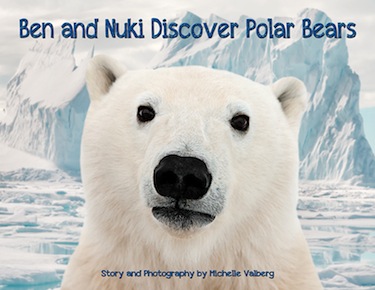
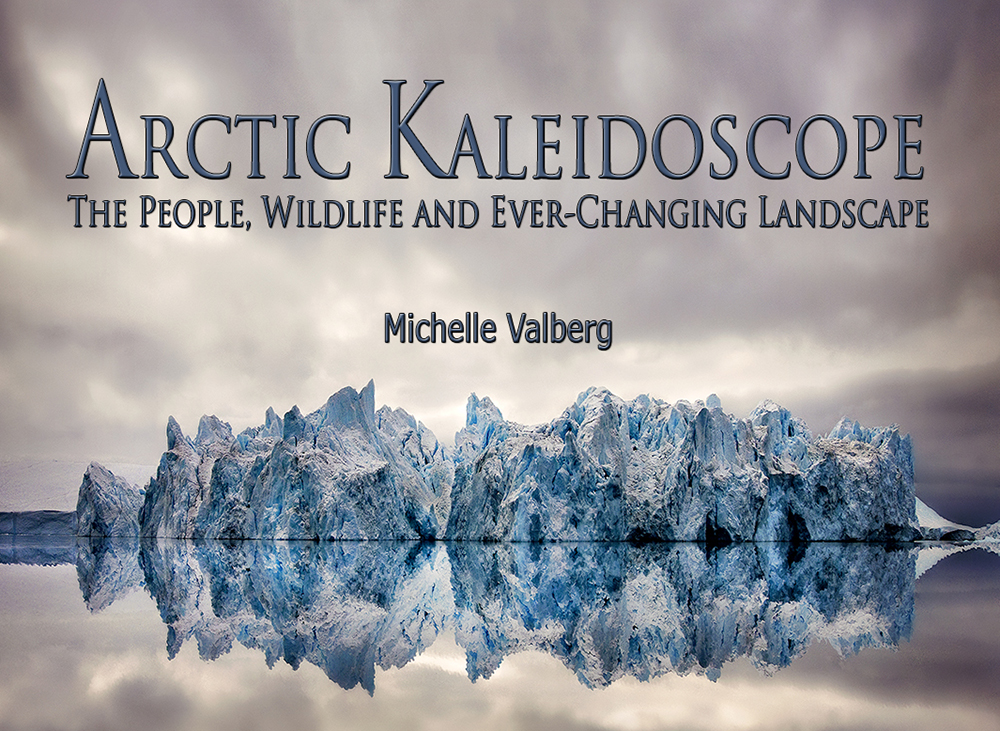
The trip also inspired her to co-found Project North in 2009. “When I started to see a lot of the smaller communities—not Iqaluit, but the really small communities of 200, 400, 800 people—I saw that they have access to hockey arenas in varying levels, but they don’t have access to the hockey equipment,” she says. “When you go into stores (up North) and see a 2L carton of milk for $18, or a watermelon for $23, you can imagine the cost of hockey equipment.”
Inspired by photographer Silvia Pecota, who brought hockey equipment to Northern communities a few years ago, Michelle decided to do the same thing. She enlisted the help of a small group of volunteers to gather donations from the Ottawa hockey community, and off she went, figuring the initiative wouldn’t go beyond that one-time contribution.
Six years later, Project North has partnered with First Air, Adventure Canada and the National Hockey League Players’ Association’s Goals & Dreams program to deliver more than $600,000 worth of hockey equipment to more than 20 Inuit communities. (You can get a sense of what the project is all about in this Canadian Tire-sponsored video, featuring Charles Hamelin, Kaillie Humphries, Hayley Wickenheiser and Prime Minister Stephen Harper, as well as Michelle.)
“It’s just continuing to grow nationally and internationally,” says Michelle. “We’ve been hearing bits and bites of different ways that Project North is helping, and it’s still so young. Hopefully in a couple years, maybe we’ll have another Jordin Tootoo coming out of the woodwork. Not that they have to play to be an NHL player; it’s just about empowering Inuit youth to be active and have the opportunities that we take for granted in southern Canada. There’s a lot of families down here who can’t afford hockey equipment either, but it’s not like you can go to a used sports store in Nunavut. Project North offers a simple yet effective solution, and I think it’s something that most Canadians can relate to.”
One thing she never assumes we can all relate to is the true experience of being a Northerner. Whenever she travels to Nunavut, she’s very conscious of the fact that she’s a non-Inuit and non-Northerner—a visitor to their land.
“It is our Canada but it is their land, their people, their wildlife and their community, and I have the utmost respect for them,” she says. “The last thing I want is for them to think I believe I’m coming in with all the answers. But I’ve established myself in the communities as a person they can trust, and made it clear that we don’t want anything in return, we just want the equipment to be used… When I go up North to photograph, it’s the same thing; I always ask permission. I’ve photographed a lot of elders, I’ve gone into people’s homes, and they know that it’s coming from goodness and I think they sense that. More than anything else, what I want to do is give a voice to the causes I’m supporting.”
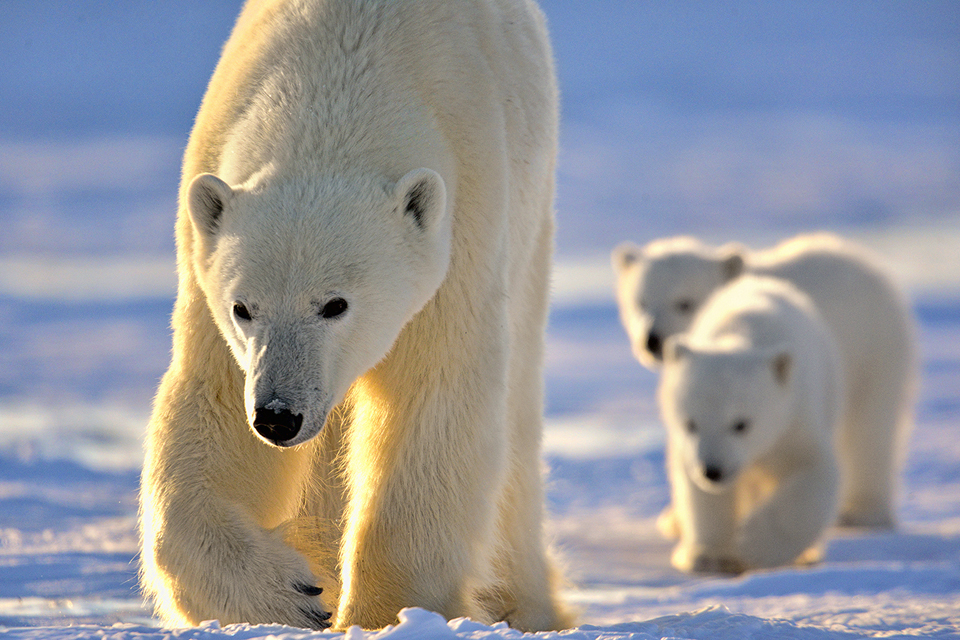
Wapusk National Park, Churchill, Man., March 2012, Photo: Michelle Valberg
A gifted photographer
So that is where Michelle Valberg, one-time aspiring pro golfer, all-time extraordinary photographer, stands today. She’s using her gifts to bring awareness to others and to capture the beauty that surrounds her. All the while, she’s getting the recognition she so greatly deserves.
Her work has been featured in exhibits across North America, including Ottawa, Toronto, Montreal and New York. In 2011, she had a critically acclaimed three-month solo exhibit at the Canadian Museum of Nature. Her largest permanent collection, at CHEO, includes more than 70 of her photographs. Next week, she travels to Los Angeles for her American gallery debut at The G2 Gallery, as part of the White Lake Preservation Project.
She is, very proudly, the only female Canadian Nikon Ambassador, which she says is a dream come true.
She even has one of her photographs, of king eiders in flight, affixed to First Air’s planes.
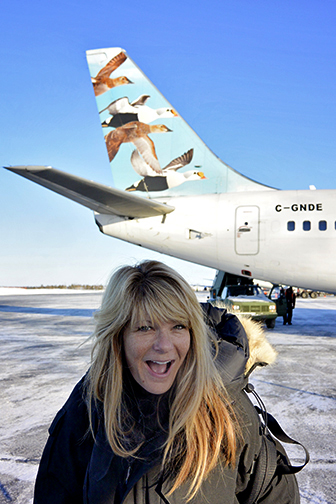
Her photography and writing are regularly featured in publications across North America and Europe, including Canadian Geographic, National Geographic, The London Tribune, Travel Life, MORE Magazine and InStyle. She’s also a regular contributor to PHOTONews Magazine, with her stunning ‘Canadian Angles’ segment.
Michelle has received loads of accolades and awards, including:
- YMCA/YWCA Women of Distinction Award (2000)
- Women’s Business Network’s Businesswoman of the Year (2003)
- Ottawa Business Journal’s Forty Under 40 (2004)
- Algonquin College Alumna of the Year (2005)
- Algonquin College Hall of Fame inductee—inaugural induction for photography (2007)
- United Way Ottawa Community Builder Award (2009)
- CHEO’s Order of the Good Bear (2010)
She’s also a two-time Premier’s Award nominee and a four-time Karsh Award nominee, and has won numerous Canadian Geographic wildlife and Arctic awards.
Michelle has come a very long way from the teenager whose dreams of knocking a small ball around the grass for money had her parents worried about her future. And she attributes much, if not most, if her success to those very parents, John and Betty.
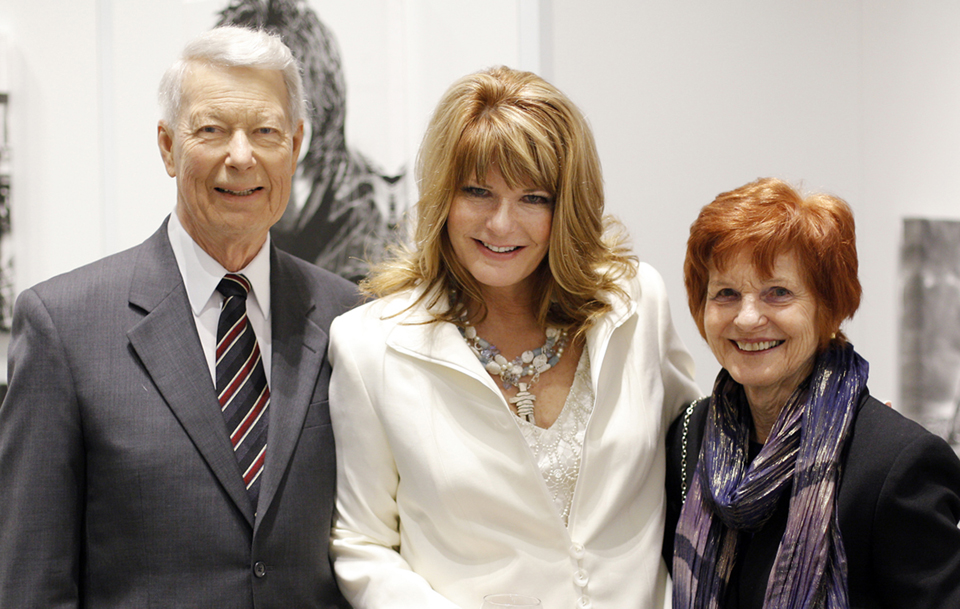
With her parents at the opening of Michelle’s Canadian Museum of Nature exhibit, Ottawa, Ont., March 2011, Photo: Blair Gable
“I had a wonderful upbringing,” says Michelle. “I had two inspiring older sisters [Kim and Diane] who didn’t beat me up too much, and amazing parents. My father was an ophthalmologist and my mother was a nurse; it was in their nature to care for people.”
Her beloved parents passed away in 2013, within four weeks of each other, after 57 years of marriage. John had myelodysplastic syndrome, “which is a pre-leukemia,” and Betty had colon cancer. Michelle and her sisters cared for them both at the end of their lives, an experience Michelle is abundantly grateful to have had.
“My parents were wonderful people,” she says. “We were blessed with parents who always made it about us and never about them… For my sisters and me to be able to give back to them in their end of life, to be able to keep them in their home, to be able to allow them to die with dignity, was nothing short of a gift.”
Michelle holds onto that gift, and to the many other gifts her parents bestowed upon her throughout their lives. The gift of positive thinking, of appreciating the value of hard work and of feeling good about giving back to others. Of having a unique perspective on the world. And of the keen eye that enables her to keep taking such incredible photographs. “They’re with me every day.”
* * *
For the latest on Michelle, visit michellevalberg.com or follow @ArcticPhotog on Twitter.
To book a portrait session, go to valbergimaging.com.
You can also visit projectnorth.ca to learn more and to donate.
 Kickass Canadians
Kickass Canadians
My wife and I have been going to the Ottawa General Hospital for her treatments, and I had the pleasure of viewing Michelle’s works, which are mounted in the Cancer Centre. Having spent eight years in the Arctic from 1965 through 1973 on radar stations operating on the Dew Line during the Cold War, I just adored these stunning and beautiful photos.
Gerald, I’m so happy to hear that Michelle’s art has brought something good to your time at the hospital. I hope your wife gets better soon.